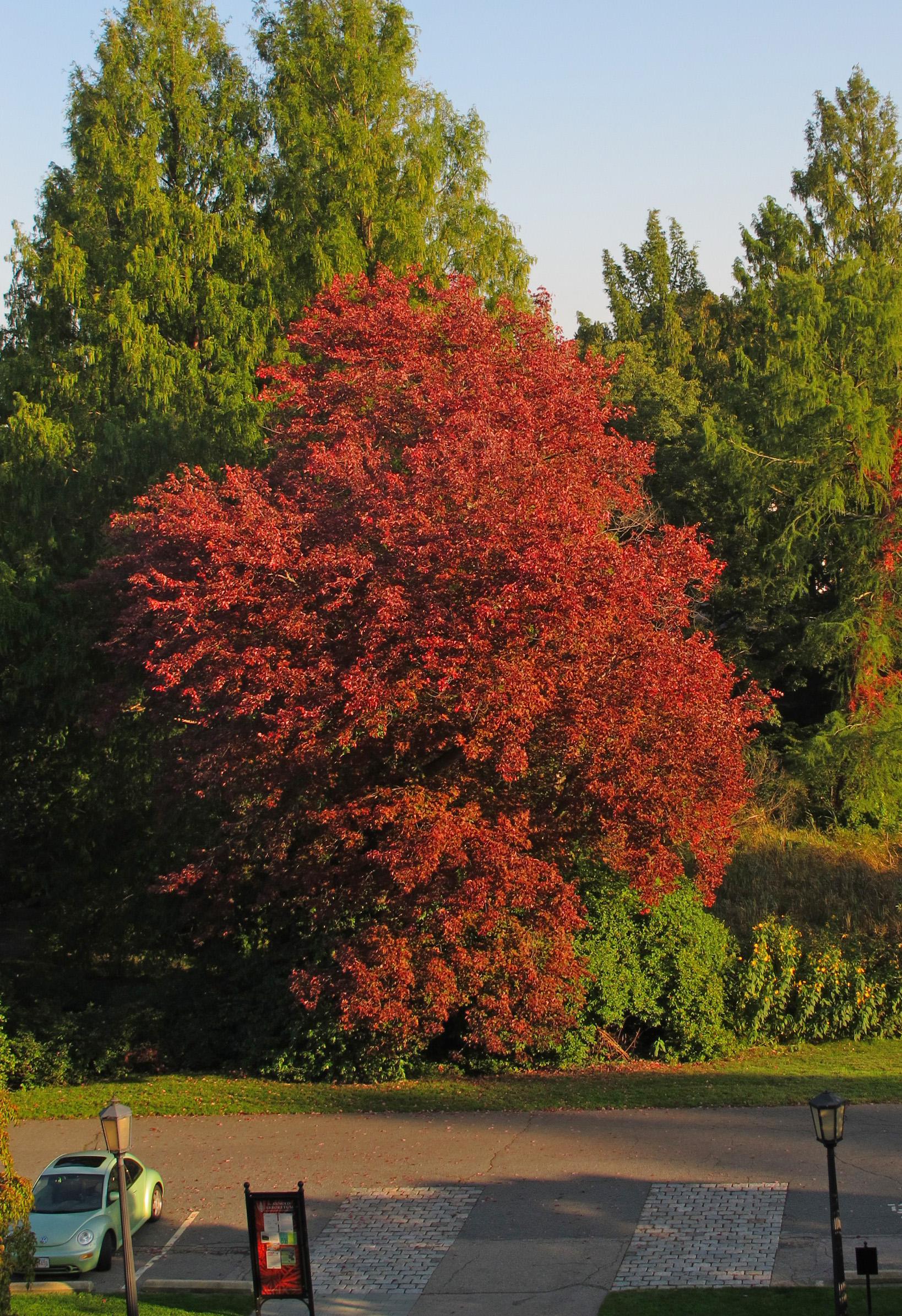Last week, after digging them from our in-ground nurseries, the Arboretum’s horticulture staff planted some 100 balled-n-burlapped trees throughout the collections. A cadre of crabapples (Malus spp.) on Peters Hill, a jumble of Juglans microcarpa (the little walnut from the Great Plains) on Weld Hill, and even a pitch of pines (Pinus spp.) in the conifers. (I hope everybody appreciates some of my new nouns of assemblage for trees.)

There were also a number of notable individuals, and one near and dear to my heart is an old cultivar of red maple (Acer rubrum) known as ‘Schlesingeri’, which I profiled in Arnoldia 67/2. The primary attribute of this selection is its precocious autumn leaf color, with shimmers of bronze evident in early August, and full-bore red announcing fall’s arrival in September, well ahead of any other tree in the collection. The Arboretum’s original tree, accession 3256*A, dates to 1888 and has not only been autumn’s harbinger, but due to its location near the Arboretum’s main gate, a friendly greeter to visitors.
The 132-year old tree has seen much in its lifetime: the construction of the Hunnewell Visitor Center, the discovery and arrival of its neighboring dawn redwoods (Metasequoia glyptostroboides), as well as eight Arboretum directors. The tree also bore witness to the 1918 flu pandemic, just like it now observes present-day COVID-19. I wonder, did Bostonians flock to the Arboretum for respite then, as they do now? What about social distancing? Did people embrace trees then, when they cannot each other, like I have seen the past few weeks? Oh, if trees could talk.

To me, ‘Schlesingeri’ is more than just a bystander, and knowing that the old tree would not last forever, in 2014 I scheduled a “reprop” of the lineage. Arboretum propagation staff rooted a number of cuttings from the 1888 tree, and just last week, accession 99-2014*A was planted not far from the old charmer. Someday, the old tree will move on, yet its replacement will grow up to grace the Arboretum’s main gate, welcoming our visitors day-in and day-out, signaling autumn’s annual arrival, and recording momentous events in its annals of rings.
From “free” to “friend”…
Established in 1911 as the Bulletin of Popular Information, Arnoldia has long been a definitive forum for conversations about temperate woody plants and their landscapes. In 2022, we rolled out a new vision for the magazine as a vigorous forum for tales of plant exploration, behind-the-scenes glimpses of botanical research, and deep dives into the history of gardens, landscapes, and science. The new Arnoldia includes poetry, visual art, and literary essays, following the human imagination wherever it entangles with trees.
It takes resources to gather and nurture these new voices, and we depend on the support of our member-subscribers to make it possible. But membership means more: by becoming a member of the Arnold Arboretum, you help to keep our collection vibrant and our research and educational mission active. Through the pages of Arnoldia, you can take part in the life of this free-to-all landscape whether you live next door or an ocean away.
